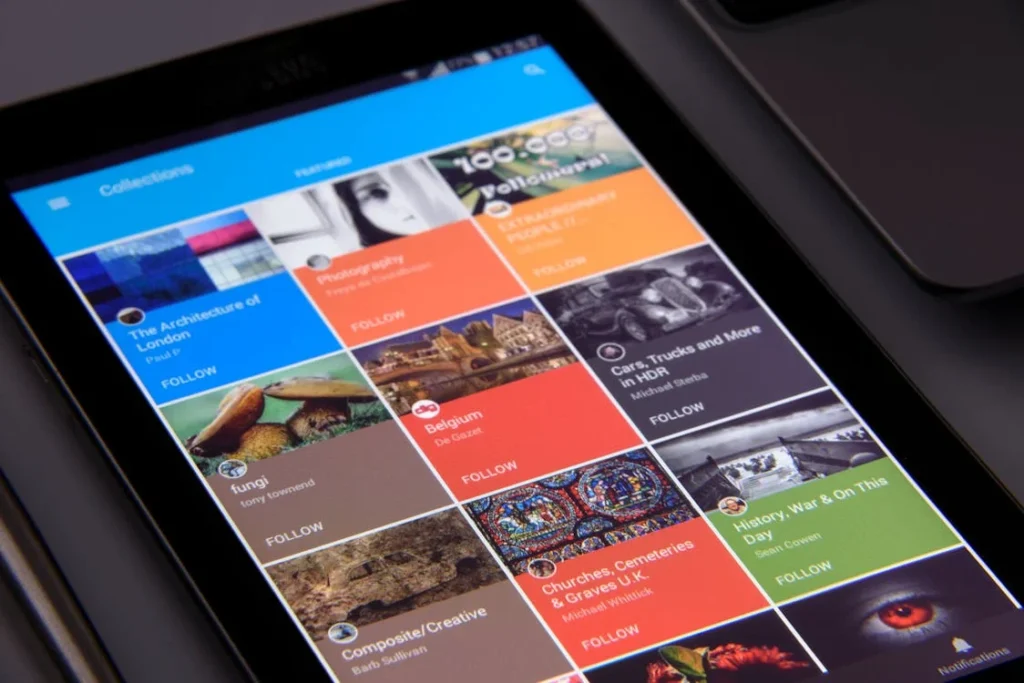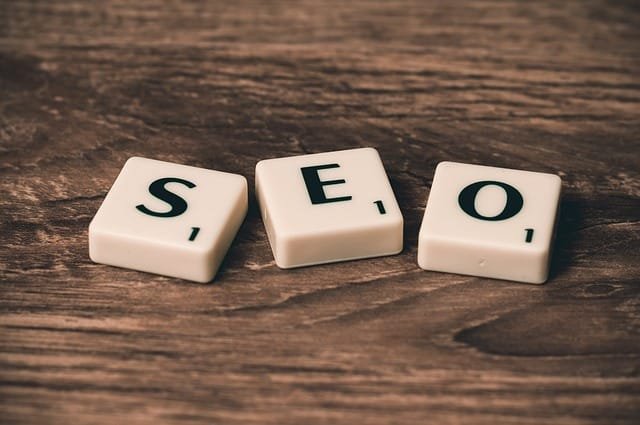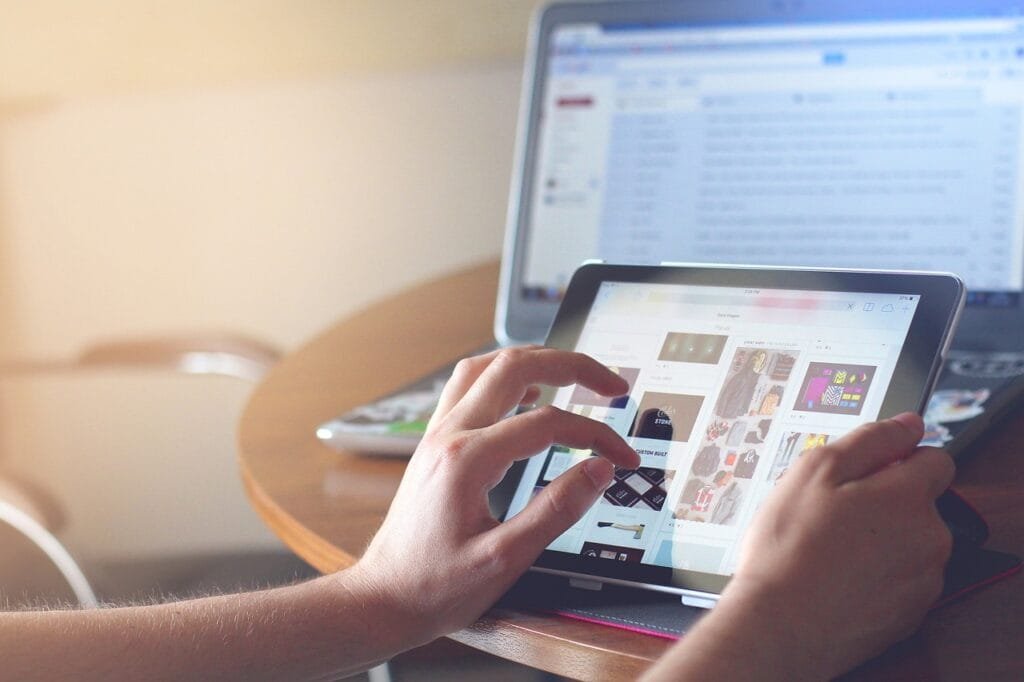(This Article has been revised, edited and added to, by Poulomi Chakraborty.)
In an era of instantaneous digital gratification, the race to deliver content swiftly, especially on mobile devices, has never been more competitive. When a user seeks medical information or healthcare services, every millisecond of delay can erode trust and drive them towards alternatives. Enter Accelerated Mobile Pages (AMP), a beacon of hope in the vast ocean of mobile optimization. Within the healthcare domain, leveraging AMP can redefine patient engagement and trust. Through this guide, we shall traverse the world of AMP, understanding its essence, its relevance in healthcare SEO, and the roadmap to harness its potential.
Understanding the AMP Phenomenon

AMP is more than just a buzzword in the SEO sphere; it’s a transformative approach to mobile content delivery.
- The Core Principle: At its heart, AMP is an open-source framework designed to make mobile pages load almost instantaneously. It achieves this by simplifying the HTML, leveraging streamlined CSS, and executing JavaScript asynchronously.
- AMP Cache: Beyond code optimizations, AMP leverages a cache system. Google’s AMP Cache, for instance, fetches AMP pages, caches them, and improves performance automatically, delivering content directly from its global cache network.
- The Visual Indicator: Most are familiar with the lightning bolt symbol accompanying search results, indicating an AMP page. This emblem is not just an assurance of speed but an emblem of optimized, user-first design.
The Strategic Edge of AMP in Healthcare Digital Strategy
The integration of Accelerated Mobile Pages (AMP) into a healthcare organization’s digital strategy goes beyond the surface benefits of speed and efficiency. For startup founders in the healthcare sector, understanding and leveraging AMP can provide a competitive edge in an increasingly crowded digital landscape. AMP’s core principles of streamlined content delivery are not just about enhancing user experience; they are about redefining the way healthcare information and services are accessed online.
Enhancing Mobile SEO with AMP: A Deeper Dive
The correlation between AMP and mobile search engine optimization (SEO) is profound. In a digital era where Google prioritizes mobile-first indexing, AMP’s role in enhancing a website’s visibility cannot be overstated. However, the strategic incorporation of AMP extends beyond mere compliance with search engine standards. It involves a holistic approach to content strategy, user engagement, and technical SEO that collectively improve a site’s search performance and user satisfaction.
Prioritizing Content for AMP Optimization
Identifying which content to optimize for AMP is a strategic decision that requires an understanding of your audience’s needs and behaviors. While the initial article suggested starting with high-traffic pages, deeper analytics should be employed to uncover not just traffic patterns but user intent and conversion rates. Analyzing mobile user pathways and interactions can highlight opportunities for AMP optimization that directly contribute to your strategic goals, such as increasing patient inquiries or enhancing the visibility of critical healthcare information.
Synergy with Existing Digital Marketing Strategies
AMP should not exist in isolation from your overall digital marketing strategy. Instead, it should be integrated in a way that amplifies your existing efforts. For instance, content marketing strategies that focus on providing valuable health information can be optimized with AMP to ensure faster loading times on mobile devices, thereby improving user engagement and sharing potential. Similarly, AMP can enhance email marketing campaigns by ensuring that any web content accessed via email loads instantly, providing a seamless user experience from inbox to website.
Advanced Features and AMP’s Flexibility
AMP’s evolving component library offers opportunities for innovative engagement strategies. Beyond the basic AMP pages, the framework supports a range of interactive features like amp-form for interactive user feedback, amp-social-share for integrating social sharing capabilities, and amp-video for embedding videos that are crucial for patient education. Understanding and utilizing these components can transform a static information page into an interactive user experience, encouraging engagement and retention.
Implementing AMP for Competitive Advantage
The decision to adopt AMP should be part of a broader digital innovation strategy. For healthcare startups, this means not only following best practices for AMP implementation but also looking for ways to innovate within the AMP framework. For example, developing AMP-optimized landing pages for specific health campaigns or services can significantly reduce load times, improving ad performance and user engagement.
Continuous Improvement and AMP Analytics
Leveraging AMP analytics for continuous improvement is crucial. By monitoring AMP page performance, healthcare startups can gain insights into user behavior, content engagement, and conversion metrics. These insights can inform content optimization, UX/UI improvements, and personalized content strategies that meet the unique needs of your audience.
Securing a Digital Advantage with AMP
For healthcare startups, the integration of AMP into their digital strategy represents more than a technical optimization; it’s a strategic move towards providing superior user experiences, improving mobile SEO, and leveraging the mobile-first approach to secure a competitive advantage. By embracing AMP’s principles and continuously innovating within its framework, healthcare startups can not only meet but exceed the digital expectations of their users, setting a new standard for healthcare information and services online.
Why Healthcare Websites Should Consider AMP

For sectors like healthcare, where timely access to information can be pivotal, AMP offers distinct advantages.
- Enhanced User Experience: Slow-loading pages can be a deterrent, especially for users seeking urgent medical guidance. AMP ensures that users get their answers swiftly, leading to a positive user experience.
- Improved Engagement: Faster loading times invariably lead to lower bounce rates. With AMP, medical websites can witness higher engagement rates, from longer session durations to increased page views.
- SEO Boost: Search engines prioritize user experience. Google, in particular, has highlighted page speed as a ranking factor. AMP pages, given their rapid load times, often witness an uplift in search rankings.
Crafting a Patient-Centric Online Experience
The imperative for healthcare websites to adopt AMP transcends the foundational advantages of speed and user engagement. At the core of this strategy lies the opportunity to craft a patient-centric online experience that not only meets but anticipates the needs of users. In the digital healthcare landscape, where the competition for attention is fierce, AMP provides a platform for healthcare startups to differentiate themselves by offering unparalleled ease of access to information and services.
Elevating Accessibility and Readability
For healthcare startups, the adoption of AMP should be seen as a commitment to accessibility and readability. The framework’s constraints on HTML, CSS, and JavaScript are not merely technical guidelines but pathways to creating content that is universally accessible. This involves designing pages that are not only fast but also easily navigable for people with disabilities, ensuring that healthcare information is inclusive. By integrating features like high-contrast buttons for users with visual impairments or ensuring that content is screen-reader friendly, startups can significantly improve the user experience for all visitors.
Strengthening Trust and Credibility
In the healthcare sector, trust and credibility are paramount. Patients are not merely looking for information; they are seeking reassurance and reliability in moments of vulnerability. AMP pages, by virtue of their speed and efficiency, send a strong signal of professionalism and attention to detail. However, the strategic implementation of AMP can further enhance a website’s trustworthiness through the inclusion of easily accessible certifications, patient reviews, and evidence-based content that loads instantaneously.
Secure and Compliant AMP Implementations
While AMP inherently improves the speed and user experience of websites, healthcare startups must also ensure that their AMP implementations adhere to industry standards and regulations, such as HIPAA in the United States. This involves securing patient data even in accelerated mobile pages, using AMP components that support encryption and secure data submission. By emphasizing security and compliance in their AMP strategy, healthcare startups can reinforce their credibility and safeguard patient trust.
Amplifying Patient Engagement and Interaction
AMP’s potential in healthcare goes beyond passive content consumption. By leveraging AMP’s interactive components, startups can facilitate a higher level of patient engagement and interaction directly on their mobile sites. This can include implementing AMP-powered forms for appointment bookings, feedback, or inquiries, which load instantly and can be filled out with ease on mobile devices. Moreover, integrating AMP with CRM and patient management systems can enable real-time updates and personalized patient communications, enhancing the overall patient experience.
Harnessing AMP for Healthcare Innovation
Innovation in healthcare often involves leveraging technology to improve patient outcomes and experiences. AMP offers a platform for startups to experiment with new formats of content delivery, such as interactive health quizzes, AMP stories for patient education, or live updates during health crises. By adopting AMP, healthcare startups can stay at the forefront of digital innovation, offering services and information in formats that resonate with modern users and set new standards in patient engagement.
AMP as a Strategic Asset for Healthcare Startups
For healthcare startups looking to carve out a niche in the digital space, AMP is not just a tool for improving page load times—it’s a strategic asset that can enhance every aspect of the user experience. From improving accessibility and trust to encouraging patient engagement and driving innovation, AMP can play a pivotal role in shaping a healthcare startup’s digital presence. By thoughtfully integrating AMP into their digital strategies, startups can offer a patient-centric online experience that stands out in the competitive healthcare market.
The AMP Blueprint for Medical Websites
While the allure of AMP is undeniable, its implementation on healthcare websites requires a strategic approach.
- Content Prioritization: Not every page on a medical website might benefit from AMP. Start by identifying high-traffic mobile pages, such as blog posts, symptom checkers, or patient guides.
- AMP & Existing SEO Efforts: While AMP can elevate mobile performance, ensure it complements existing SEO strategies. Maintain meta tags, structured data, and canonical tags when transitioning to AMP.
- Regularly Validate AMP Pages: Utilize tools like the AMP Validator to regularly check your pages for AMP conformity. This ensures that your pages maintain their AMP status and continue to benefit from its features.
Crafting an AMP-First Content Strategy
In the quest to harness the full potential of AMP for healthcare websites, founders must prioritize developing an AMP-first content strategy. This strategy should go beyond the technical aspects of AMP implementation, focusing on how content can be optimized and structured to meet the unique needs of mobile users seeking healthcare information. An AMP-first content strategy is about creating content that is not only accessible and fast-loading but also highly relevant and engaging to the user.
Personalization and User Intent
Understanding user intent is crucial in crafting content that resonates with your audience. Healthcare startups should leverage analytics to gain insights into the types of queries that lead users to their site, tailoring AMP content to address these needs directly. Personalization plays a key role here; by integrating AMP with backend systems, startups can offer personalized content recommendations or healthcare tips based on user history or preferences, enhancing the user experience and engagement.
Seamless Integration with Healthcare Services
AMP’s potential extends into making healthcare services more accessible. The strategic implementation of AMP can streamline the path to essential services such as appointment bookings, patient portals, and telehealth consultations. By embedding AMP components that facilitate these actions, healthcare startups can reduce friction in the user journey, encouraging more users to take advantage of online healthcare services.
AMP and the Future of Telehealth
As telehealth becomes a mainstay in the healthcare industry, AMP can serve as a powerful tool to optimize telehealth platforms for mobile users. This includes creating AMP-optimized landing pages for telehealth services, which load instantly and provide clear, concise information about how to access care. Additionally, AMP can improve the user experience during the telehealth consultation process by enabling faster, more reliable access to pre-consultation forms, health resources, and post-consultation follow-ups.
Building a Robust AMP Infrastructure
For healthcare startups, building a robust AMP infrastructure means going beyond basic implementation. It involves creating a scalable AMP framework that can adapt to the evolving needs of the healthcare industry and the digital landscape. This includes regular updates to AMP pages to incorporate new features and components as they become available, ensuring that the website remains at the cutting edge of mobile web technology.
Leveraging AMP for Enhanced Analytics and Insights
Implementing AMP offers unique opportunities for collecting and analyzing user behavior data. By integrating AMP with analytics tools, healthcare startups can gain deeper insights into how users interact with their AMP content. This data can inform content strategy, user experience design, and marketing efforts, ensuring that the startup remains aligned with its users’ needs and preferences.
Fostering Collaboration and Compliance
Adopting AMP requires a collaborative effort between various stakeholders, including web developers, content creators, and healthcare professionals. Ensuring that AMP pages remain compliant with healthcare regulations and standards is paramount. This collaborative approach not only ensures compliance but also fosters innovation, as teams work together to create AMP experiences that are both engaging and secure.
Empowering Healthcare Startups with AMP
The blueprint for integrating AMP into medical websites offers healthcare startups a strategic pathway to enhance their online presence, improve user engagement, and streamline access to healthcare services. By adopting an AMP-first content strategy, seamlessly integrating with healthcare services, building a robust AMP infrastructure, and fostering collaboration and compliance, startups can leverage AMP to create a competitive edge in the digital healthcare market. This strategic approach to AMP implementation positions healthcare startups to meet the evolving needs of their users, ensuring a future-proof digital presence.
AMP’s Integration with Advanced Healthcare Features
Modern medical websites aren’t just content repositories; they’re interactive platforms offering diverse functionalities.
- Telemedicine & Virtual Consultations: As telehealth surges, AMP can play a role in streamlining appointment booking interfaces, ensuring users can swiftly secure their virtual consultation slots.
- Interactive Symptom Checkers: AMP doesn’t mean sacrificing interactivity. With components like
amp-bindandamp-list, symptom checkers can still be dynamic and responsive while maintaining swift load times. - Patient Testimonials & Reviews: AMP-optimized carousel components can ensure that patient testimonials or doctor reviews load instantly, bolstering trust without any wait.
Enriching Patient Engagement Through AMP
In today’s digital age, patient engagement extends far beyond traditional in-person consultations. AMP offers a unique opportunity for healthcare startups to innovate and improve the way patients interact with healthcare services online. By integrating AMP with advanced healthcare features, startups can create a seamless, engaging, and highly responsive online experience for patients. This not only enhances patient satisfaction but also positions your startup as a forward-thinking player in the healthcare industry.
Interactive Health Education Tools
Education is a crucial component of patient care, and AMP can significantly improve the delivery of health information. By utilizing AMP’s dynamic components, healthcare startups can develop interactive educational tools such as animated infographics that detail complex health conditions or interactive quizzes that help patients assess their symptoms. These tools make learning about health more engaging and accessible, empowering patients to take an active role in their healthcare journey.
Streamlining Healthcare Operations with AMP
The operational aspect of healthcare can greatly benefit from AMP’s speed and efficiency. For startups, integrating AMP into the operational workflows can lead to more efficient patient service and improved backend operations.
Efficient Patient Onboarding
The patient onboarding process is often fraught with paperwork and waiting times. Implementing AMP for forms and informational content can streamline this process, making it faster and more user-friendly. With AMP, patients can quickly fill out necessary forms, access privacy policies, and understand treatment procedures right from their mobile devices, reducing administrative burdens and improving the patient experience.
Innovating Healthcare Delivery with AMP
AMP’s role in healthcare goes beyond improving website performance; it’s a tool for innovation. By leveraging AMP, healthcare startups can offer new services and ways of delivering care that meet the modern patient’s expectations for speed and convenience.
Revolutionizing Patient Follow-Up and Care Continuity
Continuity of care is critical in healthcare, ensuring that patients receive consistent and ongoing management of their conditions. AMP can play a vital role in revolutionizing patient follow-up processes. For example, integrating AMP with patient management systems can enable the delivery of follow-up care instructions, medication reminders, and appointment notifications instantly to a patient’s mobile device. This ensures that patients remain engaged in their care processes, improving health outcomes and patient satisfaction.
AMP and Personalized Patient Experiences
In the era of personalized medicine, AMP can help healthcare startups deliver personalized patient experiences at scale. By leveraging AMP’s capabilities in conjunction with data analytics and AI, startups can create dynamic content that adjusts to individual patient profiles, delivering personalized health tips, reminders, and educational content that resonates with each patient’s unique health journey.
Personalized Health Dashboards
Imagine a mobile-optimized, AMP-powered dashboard that provides patients with real-time access to their health data, upcoming appointments, and personalized health content. Such dashboards can significantly enhance the patient experience, offering a one-stop-shop for all their healthcare needs, accessible instantaneously on any mobile device. By integrating these dashboards with electronic health records (EHRs) and patient portals, healthcare startups can offer unparalleled access to personalized health information, fostering stronger patient engagement and loyalty.
A New Frontier in Digital Healthcare
AMP’s integration with advanced healthcare features represents a new frontier in digital healthcare. By leveraging AMP to enhance patient engagement, streamline operations, innovate healthcare delivery, and personalize patient experiences, healthcare startups can set new standards in patient care and satisfaction. In doing so, they not only improve health outcomes but also position themselves as leaders in the digital transformation of healthcare. The strategic application of AMP within healthcare startups can unlock tremendous value, offering a blueprint for the future of healthcare in the digital age.
The Mobile-First Paradigm and AMP’s Role
The shift towards mobile browsing is not just a trend; it’s a paradigm shift. AMP sits at the heart of this transition, especially for healthcare websites.
- Increasing Mobile Search Queries: Today, a significant percentage of health-related queries originate from mobile devices. From looking up symptoms to finding the nearest clinic, mobile is the go-to platform for many.
- Micro-Moments in Healthcare: These are instances when users turn to their devices, especially mobile, for quick answers. Whether it’s a sudden symptom or a query about a medication, these micro-moments are opportunities for healthcare websites to deliver instant, relevant content via AMP.
- AMP Stories in Healthcare: Leveraging the visually rich, immersive experience of AMP stories, healthcare providers can offer engaging narratives, from patient recovery stories to health tips, optimized for mobile.
Navigating the Shift to Mobile-First Healthcare
The shift towards a mobile-first approach in healthcare digital strategy is not merely a response to growing mobile usage trends; it’s an acknowledgment of the evolving patient behavior and expectations. Accelerated Mobile Pages (AMP) plays a crucial role in this paradigm, offering healthcare startups a framework to build fast, responsive, and user-centric mobile experiences. As we delve deeper into the significance of mobile-first in healthcare, it becomes clear that AMP is not just an option but a necessity for startups aiming to succeed in the digital healthcare landscape.
Mastering Mobile User Experience (UX)
Creating an exceptional mobile user experience is paramount for healthcare startups. AMP offers the tools to streamline this process, ensuring that content is not only accessible but also engaging and easy to navigate on mobile devices. Startups should focus on designing AMP pages that are intuitive, with easy-to-use interfaces that cater to the specific needs of healthcare seekers. This includes clear call-to-action buttons, simplified navigation menus, and mobile-optimized forms that enhance the overall user journey on mobile devices.
Leveraging AMP for Mobile Search Visibility
In the mobile-first world, search visibility on mobile devices is critical. AMP pages are favored in mobile search results, not only because of their speed but also because they provide a superior user experience. For healthcare startups, this means that adopting AMP can lead to improved search engine rankings, driving more traffic to their sites. However, it’s essential to strategically select which pages to AMP-lify, focusing on high-value content that patients are most likely to search for on mobile devices.
Creating Content with Mobile Intent in Mind
Understanding the intent behind mobile searches is key to creating content that resonates with the mobile audience. Mobile users often seek quick, actionable information, especially in the healthcare context where immediate needs are common. Healthcare startups should tailor their content strategy to these mobile-specific intents, creating AMP-optimized pages that address urgent questions, provide easy access to healthcare services, and offer concise, actionable health advice.
Building for the Future with AMP
As technology advances, the mobile-first paradigm in healthcare is set to evolve. Healthcare startups must not only adopt AMP but also stay ahead of the curve by anticipating future mobile trends and user expectations.
Preparing for Emerging Mobile Technologies
With the advent of new mobile technologies, such as augmented reality (AR) and wearable devices, healthcare startups have an opportunity to integrate these technologies with AMP for more interactive and engaging patient experiences. For instance, AMP can be used to quickly load AR experiences that help patients understand complex health conditions or procedures. Similarly, integrating AMP with data from wearable devices can provide users with instant insights into their health metrics.
AMP as the Foundation of Mobile-First Healthcare
The role of AMP in the mobile-first paradigm is undeniable. For healthcare startups, embracing AMP is not just about improving page load times; it’s about building a foundation for a comprehensive digital healthcare experience that meets the needs of the modern mobile user. By focusing on mobile UX, enhancing mobile search visibility, creating content with mobile intent, and preparing for future mobile technologies, healthcare startups can leverage AMP to secure a competitive edge in the rapidly evolving digital healthcare market. Through strategic implementation of AMP, startups can ensure they are not just participating in the mobile-first paradigm but leading the way in the future of healthcare.
Potential Challenges of AMP in Healthcare SEO

While AMP offers a plethora of advantages, it’s not devoid of challenges, especially in the nuanced field of healthcare.
- Limited JavaScript: AMP’s restrictive approach to JavaScript ensures speed but can be limiting for pages requiring complex scripts. However, with AMP’s evolving component library, many of these challenges are gradually being addressed.
- Ad Monetization Concerns: For medical websites that rely on ad revenues, transitioning to AMP might require rethinking ad strategies due to AMP’s specific ad components and guidelines.
- Branding & Customization: The streamlined nature of AMP might initially seem restrictive for intricate branding or customization. However, with creativity and the right components, consistent branding can still be achieved.
Understanding and Mitigating AMP Limitations
While Accelerated Mobile Pages (AMP) offers significant advantages for healthcare websites, particularly in SEO and mobile user experience, it also presents unique challenges that healthcare startups must navigate carefully. Addressing these challenges requires a strategic approach, balancing the benefits of AMP with its limitations to ensure that your healthcare startup’s digital presence is both high-performing and comprehensive.
Tackling Limited Customization Options
One of the primary concerns with AMP is its potential to limit website customization and branding due to the constraints on HTML, CSS, and JavaScript. For healthcare startups, maintaining a unique brand identity is crucial to stand out in a competitive market. To mitigate this challenge, startups should focus on leveraging AMP’s customizable components creatively. By using AMP-compatible web design tools and templates, startups can design AMP pages that reflect their brand identity while adhering to AMP standards. Additionally, engaging with AMP’s community and staying updated on new features can provide opportunities to enhance customization over time.
Overcoming Analytics and Tracking Restrictions
AMP’s restrictions on JavaScript can complicate the implementation of analytics and tracking tools, which are essential for understanding user behavior and optimizing website performance. To navigate this challenge, healthcare startups should utilize the AMP analytics component, which allows for the integration of analytics platforms in a way that’s compliant with AMP’s constraints. It’s also advisable to develop a comprehensive analytics strategy that combines AMP-specific analytics with broader data collection methods to ensure a holistic view of user engagement across your digital properties.
Ensuring Content Parity Between AMP and Non-AMP Pages
Maintaining content parity between AMP and non-AMP versions of a website is crucial for SEO and user experience. Discrepancies between the two can lead to issues such as duplicate content, which can negatively impact search rankings, or inconsistent user experiences, which can frustrate users and increase bounce rates. Healthcare startups should implement a content management strategy that ensures all updates are simultaneously reflected on both AMP and non-AMP pages. Automation tools can facilitate this process by synchronizing content updates across different versions of the site.
Strategizing AMP Implementation in Advertising and Monetization
For healthcare startups that rely on advertising and other forms of monetization, AMP’s specific ad components and guidelines can present challenges. Adapting to AMP’s advertising framework requires a strategic approach to ensure that monetization efforts are effective without compromising page speed or user experience. Startups should explore AMP’s advertising options, such as amp-ad and amp-sticky-ad, to integrate ads seamlessly into their AMP pages. Additionally, testing different ad formats and placements can help identify strategies that maximize revenue while maintaining a positive user experience.
Preparing for the Evolving AMP Ecosystem
The AMP project is continuously evolving, with regular updates that introduce new features and improvements. Healthcare startups must stay agile, adapting their AMP strategy as the ecosystem changes. This involves regularly reviewing AMP documentation, participating in AMP community forums, and testing new features to understand their impact on your website. By staying informed and flexible, startups can leverage AMP’s advancements while mitigating potential challenges.
A Strategic Approach to AMP Challenges
Overcoming the potential challenges of AMP in healthcare SEO requires a strategic, informed approach. By addressing issues related to customization, analytics, content parity, and monetization head-on, healthcare startups can harness the benefits of AMP without being hindered by its limitations. Embracing AMP’s evolving nature and integrating it thoughtfully into your digital strategy can position your healthcare startup for success in the competitive digital landscape, ensuring that you provide fast, accessible, and engaging content to your audience.

Related: Check out our free SEO suite

Measuring the Impact: AMP Analytics
Adopting AMP isn’t a set-it-and-forget-it endeavor. Continually measuring its impact is essential to gauge its effectiveness and ROI.
- AMP Analytics Component: This specialized AMP component enables the tracking of user interactions on AMP content. From page views to link clicks, it provides insights analogous to traditional analytics tools.
- Integration with Existing Tools: AMP Analytics is designed to work seamlessly with various analytics platforms, from Google Analytics to Adobe Analytics, ensuring consistent tracking and reporting.
- Key Metrics to Monitor: Post-AMP implementation, pay close attention to mobile bounce rates, page load times, mobile search rankings, and user engagement metrics to measure AMP’s tangible impact.
Harnessing Data for Informed Decision-Making
The implementation of Accelerated Mobile Pages (AMP) signifies a commitment to enhancing user experience and search engine performance for healthcare websites. However, the true value of AMP adoption lies in the ability to measure its impact accurately. AMP Analytics serves as a crucial tool in this process, offering detailed insights into user behavior on AMP pages. For healthcare startups, leveraging these insights is pivotal in refining digital strategies, ensuring they not only meet but exceed patient expectations and business objectives.
Delving Deeper into User Engagement Metrics
User engagement metrics are vital indicators of the effectiveness of AMP pages in capturing and retaining user attention. Startups should focus on analyzing metrics such as time on page, bounce rate, and conversion rates specific to AMP content. These metrics offer a window into how users interact with the fast-loading pages, providing clues on content relevance, page layout effectiveness, and the overall user journey. By understanding these engagement patterns, healthcare startups can make data-driven adjustments to content strategy, page design, and call-to-action placements, enhancing the overall impact of their AMP pages.
Integrating AMP Analytics with Broader Marketing Strategies
AMP Analytics should not operate in isolation but as part of a comprehensive analytics strategy that encompasses all digital marketing efforts. Integrating AMP data with insights from non-AMP pages and other marketing channels enables a holistic view of user behavior and campaign performance. This integration facilitates the identification of trends and patterns across different segments of the website, allowing for more targeted and effective marketing strategies. For instance, insights from AMP Analytics can inform content creation for social media campaigns, email marketing, and other digital channels, ensuring a consistent and user-focused approach across all touchpoints.
Leveraging Cross-Device Insights
In today’s multi-device world, understanding how users interact with AMP pages across different devices is crucial. AMP Analytics provides the capability to track cross-device usage, offering valuable insights into the preferences and behaviors of your audience. This information can guide device-specific optimizations, ensuring that AMP content delivers a seamless and engaging experience regardless of the device used. For healthcare startups, these insights can also inform mobile app development strategies, integrating AMP principles to enhance app performance and user satisfaction.
Setting Benchmarks and Measuring ROI
Establishing benchmarks is essential for measuring the success of AMP implementations over time. Startups should define clear, measurable objectives for their AMP pages, such as improved search rankings, higher engagement rates, or increased conversions from mobile users. Tracking progress against these benchmarks using AMP Analytics allows startups to quantify the return on investment (ROI) of their AMP efforts. This quantitative approach to measuring success not only validates the strategic decision to adopt AMP but also provides a framework for continuous improvement and optimization.
Strategic Insights for Future Growth
AMP Analytics offers more than just a snapshot of current performance; it provides strategic insights that can drive future growth for healthcare startups. By deeply analyzing user engagement, integrating AMP data into broader marketing strategies, leveraging cross-device insights, and measuring ROI against defined benchmarks, startups can ensure their digital presence is not only competitive but also highly effective in meeting the needs of their audience. In the ever-evolving digital healthcare landscape, the strategic use of AMP Analytics is a key differentiator, enabling startups to make informed decisions that enhance their digital strategy and improve patient outcomes.
Future of AMP in Healthcare Digital Landscape

As the digital realm evolves, AMP is set to play a pivotal role, especially in the healthcare sector.
- Machine Learning & AMP: With the rise of AI-driven content personalization, there’s potential for integrating machine learning models with AMP. Imagine personalized health tips or doctor recommendations loading instantly on mobile devices.
- Integration with Emerging Tech: As wearable health tech and IoT become more mainstream, AMP can be the bridge that delivers instantaneous health insights and recommendations to users on their mobile devices.
- Staying Updated with AMP: The world of AMP is dynamic, with new components and updates regularly rolled out. Subscribing to official AMP channels or forums can keep healthcare webmasters abreast of the latest developments.
Pioneering Next-Gen Patient Experiences with AMP
The trajectory of AMP within the healthcare digital landscape is set to redefine how healthcare providers engage with their audiences. As we look to the future, the focus shifts from leveraging AMP for its speed and efficiency to harnessing its potential to pioneer next-generation patient experiences. For healthcare startups, this evolution presents an opportunity to lead in the creation of innovative, patient-centric digital solutions that cater to the emerging needs and expectations of a tech-savvy population.
Personalization at the Forefront
The future of AMP in healthcare is intrinsically linked to the advancement of personalized patient experiences. By integrating AMP with AI and machine learning technologies, startups can deliver content that adapts in real-time to the needs and preferences of individual users. This level of personalization could extend from tailored health tips and recommendations to dynamic patient education resources, all loading instantaneously on mobile devices. Implementing such adaptive AMP solutions will require startups to invest in data analytics and personalization technologies, ensuring that every patient interaction is meaningful and impactful.
Integrating AMP with Cutting-Edge Technologies
As new technologies emerge, AMP’s flexibility and adaptability will enable healthcare startups to stay at the forefront of digital innovation. The integration of AMP with technologies like AR, VR, and IoT promises to unlock new possibilities in patient education, remote diagnostics, and health monitoring, transforming the way healthcare information and services are delivered.
Enhanced Patient Education through AR and VR
The potential for AMP to integrate with augmented reality (AR) and virtual reality (VR) technologies can revolutionize patient education and engagement. By embedding AR/VR experiences within AMP pages, healthcare startups can offer immersive educational content that helps patients understand complex medical conditions or procedures in a highly interactive and engaging manner. This could significantly improve patient comprehension, satisfaction, and outcomes.
The Role of AMP in Remote Healthcare Delivery
Telehealth has seen exponential growth, a trend that is expected to continue. AMP’s role in this domain is pivotal, offering a seamless platform for remote healthcare delivery. Startups can leverage AMP to create instant-loading telehealth services, from virtual consultations to remote patient monitoring, ensuring that patients receive timely and efficient care, irrespective of their location.
Streamlining Telehealth Access
The future of AMP in healthcare includes streamlining access to telehealth services. By optimizing telehealth portals and appointment booking systems with AMP, startups can remove barriers to access, ensuring that patients can easily navigate and utilize remote healthcare services. This not only improves patient experience but also expands the reach of healthcare services to underserved populations.
Commitment to Continuous Learning and Adaptation
For healthcare startups, staying informed about the latest developments in AMP and related technologies is crucial for maintaining a competitive edge. Subscribing to official AMP channels, participating in relevant forums, and engaging with the AMP community can provide insights into new features, best practices, and innovative uses of AMP in healthcare. This commitment to continuous learning and adaptation is essential for leveraging AMP to its full potential in the evolving healthcare digital landscape.
Shaping the Future with AMP
The future of AMP in the healthcare digital landscape is one of immense potential and opportunity. By focusing on personalization, integrating with emerging technologies, enhancing remote healthcare delivery, and committing to continuous learning, healthcare startups can utilize AMP to shape the future of patient care. In doing so, they will not only meet the current demands of the digital-savvy patient but also lead the way in defining the future of healthcare in the digital age.
Balancing User Experience and Monetization

For many medical websites, especially health publications or forums, monetization through ads is essential. But how does one balance the swiftness of AMP with effective monetization?
- AMP-Optimized Ads: The AMP project isn’t oblivious to the need for ads. AMP provides specific ad components, like
amp-ad, designed to serve ads quickly while ensuring they don’t detract from the user experience. - Affiliate Links & AMP: Many health websites rely on affiliate marketing, linking to health products or services. With components like
amp-iframe, it’s possible to seamlessly integrate affiliate links without hampering page speed. - Sponsored Content & Partnerships: AMP doesn’t restrict sponsored content or partner modules. However, it’s essential to ensure that these integrations adhere to AMP’s performance guidelines to maintain page speed.
Crafting a Harmonious User Experience with AMP
In the realm of healthcare digital marketing, striking a delicate balance between monetization efforts and maintaining an optimal user experience is paramount. The deployment of Accelerated Mobile Pages (AMP) introduces a unique set of challenges and opportunities in this regard. For healthcare startups, the strategic integration of monetization models within the AMP framework must be executed with precision, ensuring that revenue generation efforts do not detract from the core mission of providing accessible, high-quality healthcare information.
Elevating Content Value Above Ads
The essence of harmonizing monetization with user experience lies in prioritizing the value of content over the visibility of ads. Healthcare startups should focus on delivering content that genuinely addresses the needs and concerns of their audience, thereby building trust and credibility. Within this context, ads and sponsored content can be integrated seamlessly, ensuring they are relevant and add value to the user’s journey. This approach not only enhances the user experience but also increases the effectiveness of the ads, as users are more likely to engage with content that is pertinent and helpful.
Innovative Monetization Strategies within AMP
Adapting monetization strategies to fit within the AMP environment requires creativity and a deep understanding of user behavior. Healthcare startups can explore a variety of revenue-generating models that align with AMP’s fast-loading, mobile-first philosophy, ensuring that these strategies contribute to, rather than hinder, the overall user experience.
Leveraging Sponsored Content and Partnerships
Sponsored content and partnerships offer a viable pathway to monetization that can complement the informational and educational goals of healthcare websites. By collaborating with reputable partners whose products or services align with the startup’s values and audience needs, startups can create sponsored content that is informative, engaging, and subtly promotional. This content must be clearly labeled to maintain transparency and trust with the audience, but when done correctly, it can serve as a valuable resource for users while generating revenue for the startup.
Optimizing Ad Placement and Performance
The strategic placement and optimization of ads on AMP pages are critical to maintaining a balance between monetization and user experience. Ads should be integrated into the page layout in a way that feels natural and unobtrusive, avoiding practices that disrupt the content consumption process, such as excessive pop-ups or auto-playing videos. Additionally, utilizing AMP’s built-in ad components, such as amp-ad, allows for efficient loading of ads that can be targeted and personalized, improving both the user experience and ad performance.
Diversifying Revenue Streams
Beyond traditional ads and sponsored content, healthcare startups should consider diversifying their revenue streams to include options such as affiliate marketing, premium content subscriptions, or membership models. These models can provide more consistent revenue while also offering users additional value, such as access to exclusive content or enhanced services. By diversifying monetization strategies, startups can reduce their reliance on intrusive ad models, improving the overall user experience.
Continuously Monitoring and Adjusting Strategies
The digital landscape is continually evolving, and what works today may not work tomorrow. It’s crucial for healthcare startups to adopt a mindset of continuous improvement, regularly analyzing the performance of their monetization strategies and their impact on user experience. This involves gathering feedback from users, monitoring engagement and conversion metrics, and staying abreast of changes in AMP technology and advertising standards. By being proactive and adaptable, startups can fine-tune their approach to ensure that monetization efforts are effective, sustainable, and aligned with the best interests of their users.
A Synergistic Approach to AMP Monetization
In the complex interplay between monetization and user experience, AMP offers healthcare startups a framework to achieve a synergistic balance. By prioritizing content value, exploring innovative revenue models, optimizing ad strategies, and committing to continuous evaluation and adaptation, startups can navigate the challenges of monetization within the AMP ecosystem. The goal is to create a digital environment where monetization efforts support, rather than compromise, the mission to deliver accessible, high-quality healthcare information, ultimately fostering trust and loyalty among users.
Conclusion: Crafting the Future of Digital Healthcare with AMP
Healthcare, in its essence, is about timeliness, precision, and trust. In the digital age, these values translate to swift access to information, accurate content delivery, and unwavering data security. AMP, with its core tenets of speed and user-first design, aligns seamlessly with these healthcare ideals.
As healthcare professionals and digital experts look towards the horizon, contemplating the next revolution in digital health experiences, AMP stands as a steadfast ally, ready to shape the future. Whether it’s instantaneous access to medical breakthroughs, real-time consultations, or immersive health education campaigns, with AMP, the promise is clear: immediate, impactful, and always user-centric.
READ NEXT:
- How Indian Business Need to Protect their Customer Data under IT Act, 2008
- Choosing your Business Legal Structure in the US: An In-Depth Guide
- All About Key Managerial Personnel in Indian Companies
- Utilizing SEO Analytics to Optimize Startup Mobile-Friendly Design
- Startup Guide to Tracking Mobile SEO Performance




















